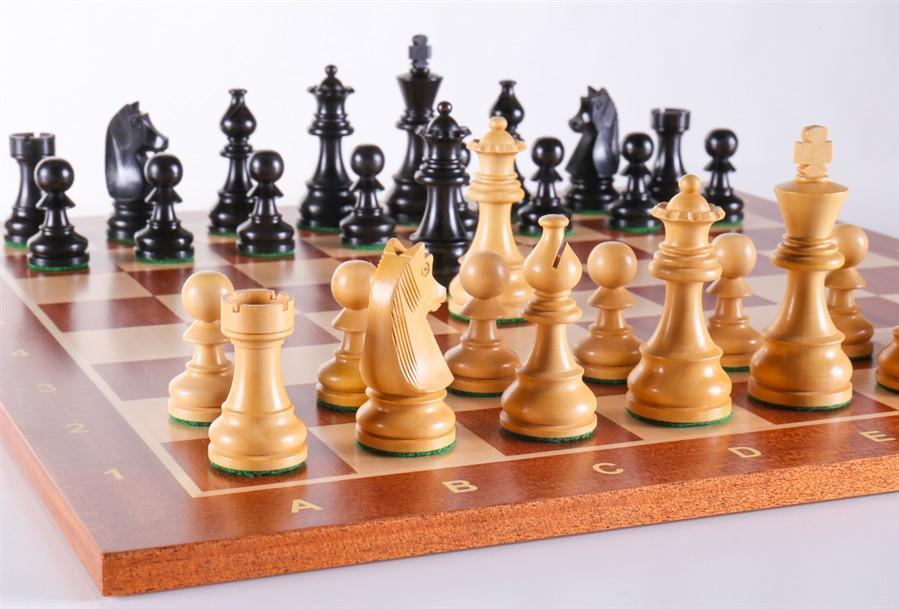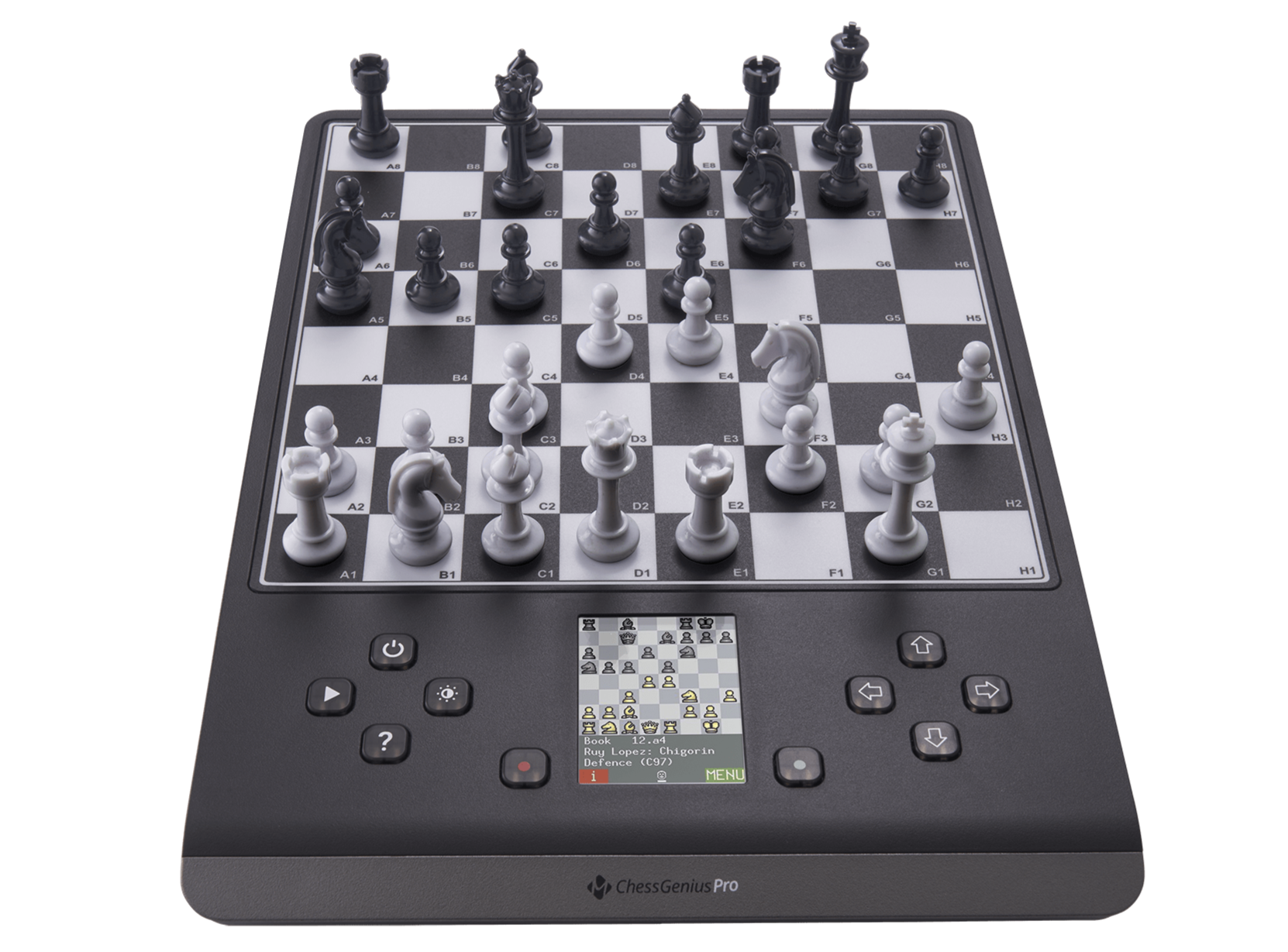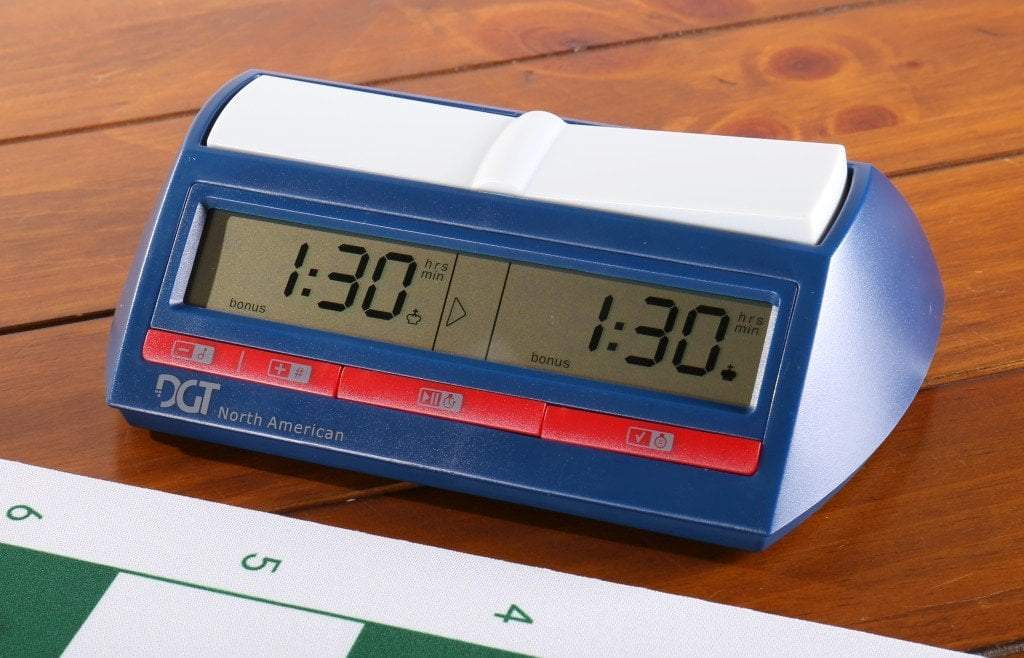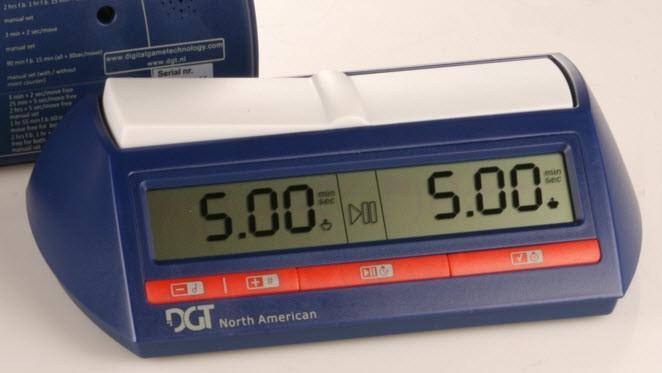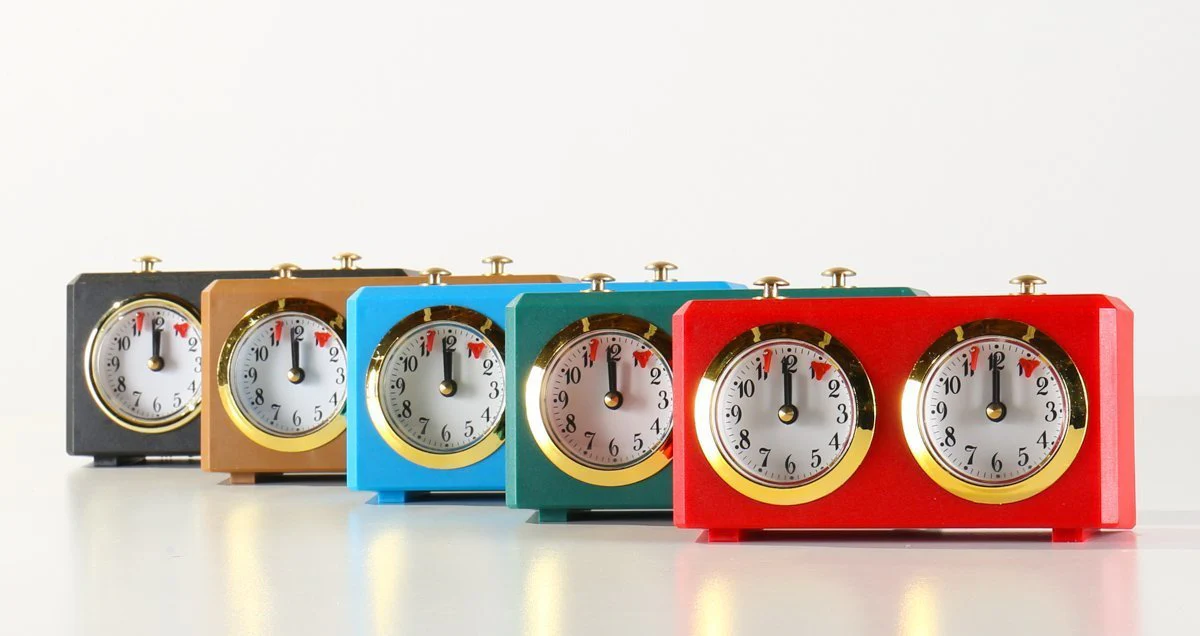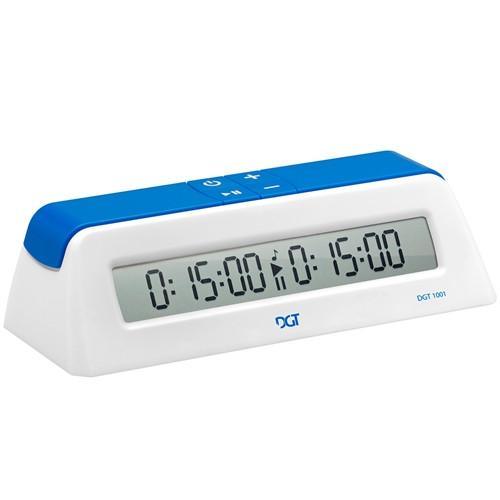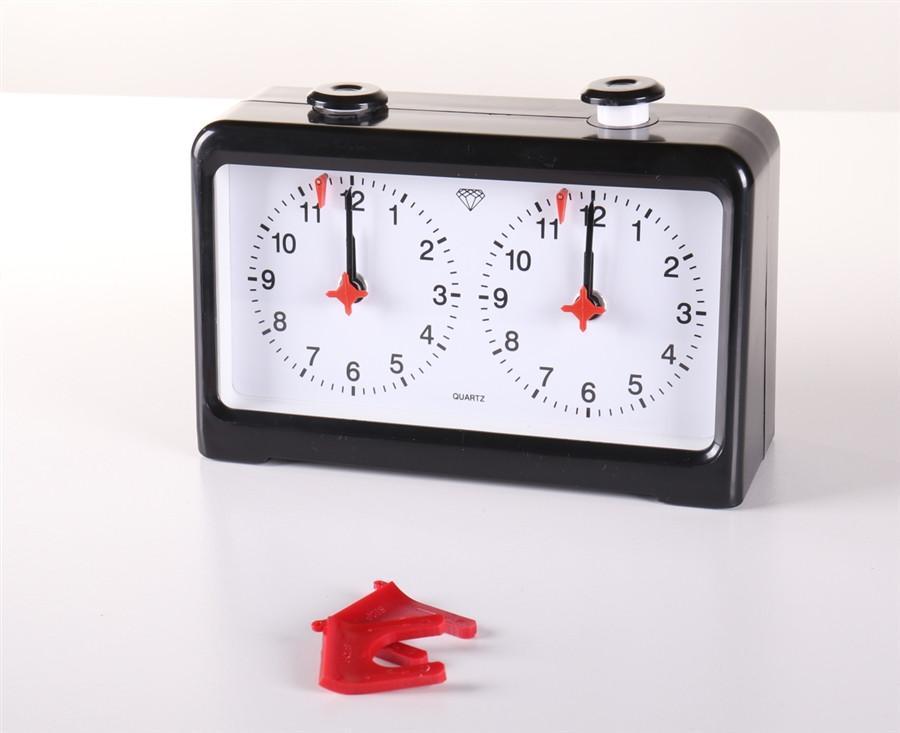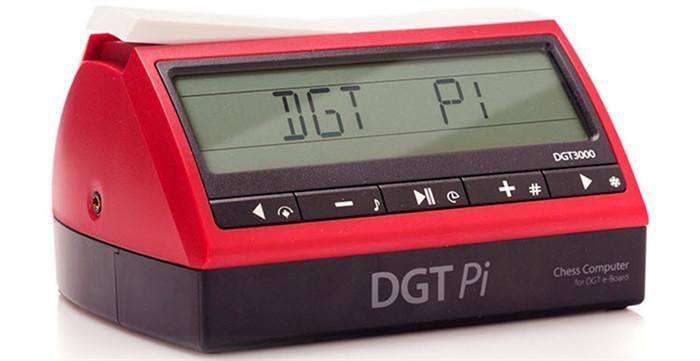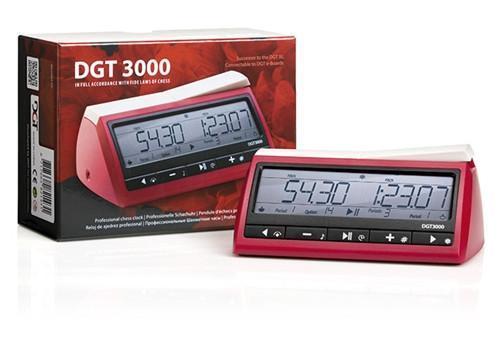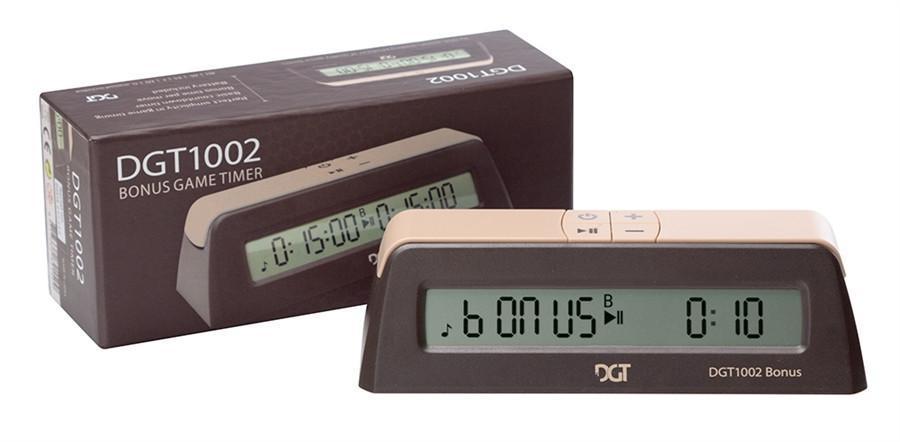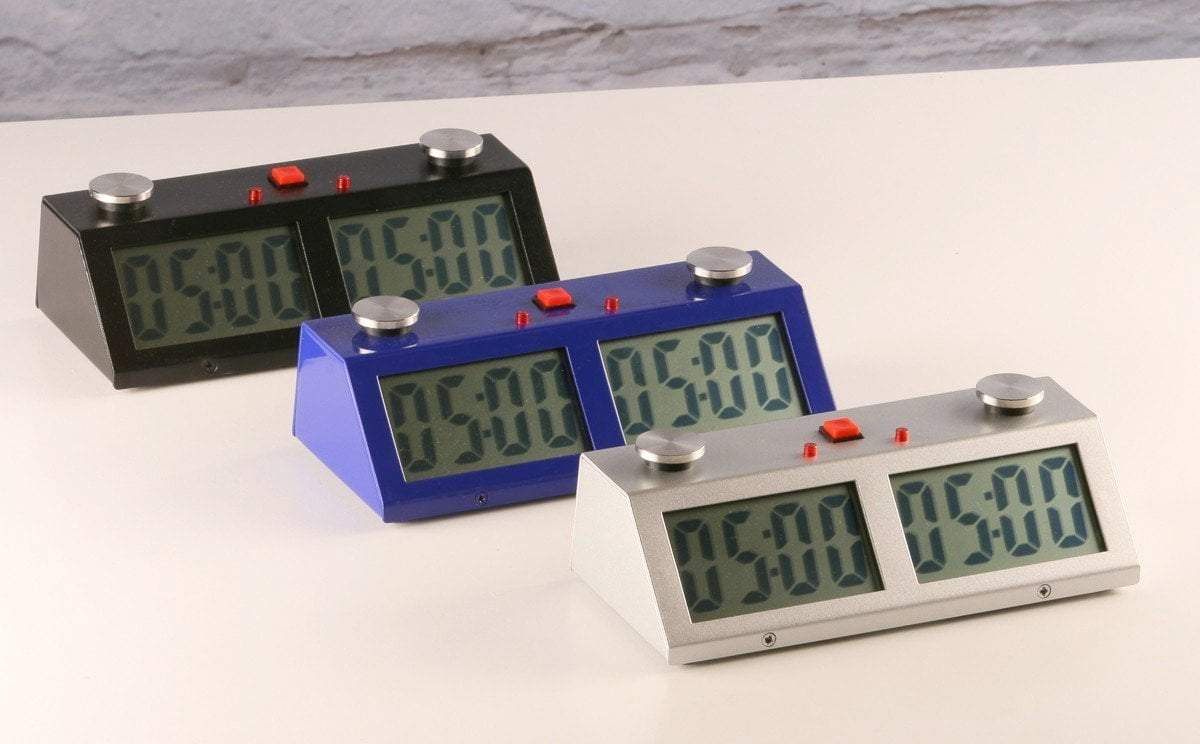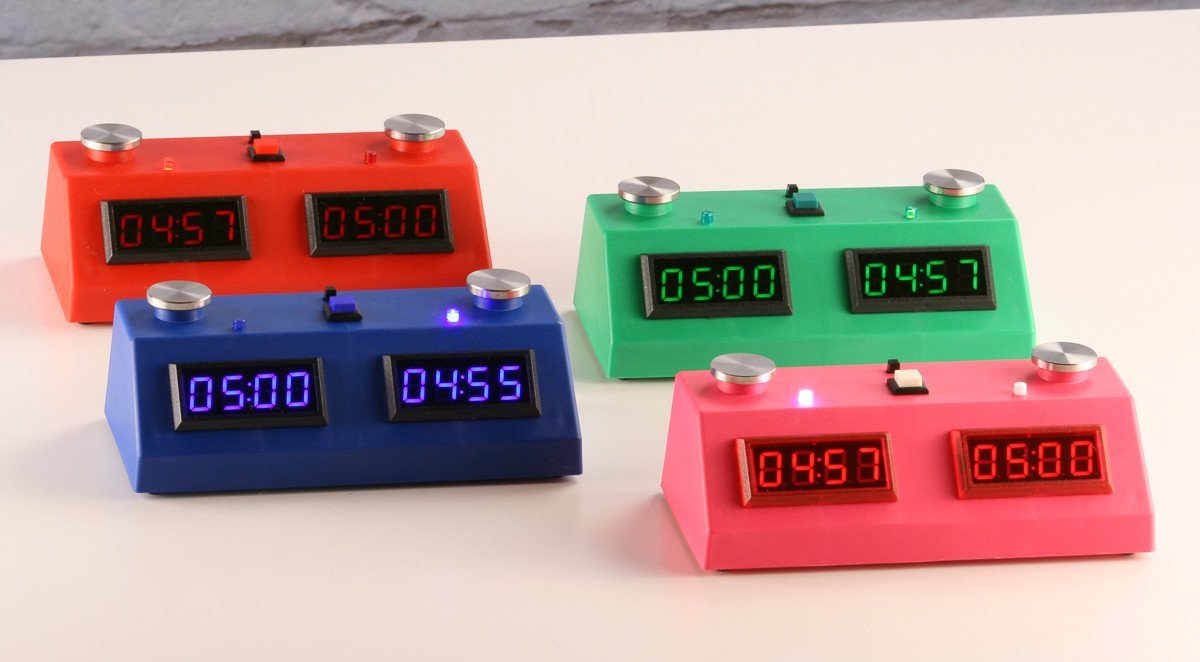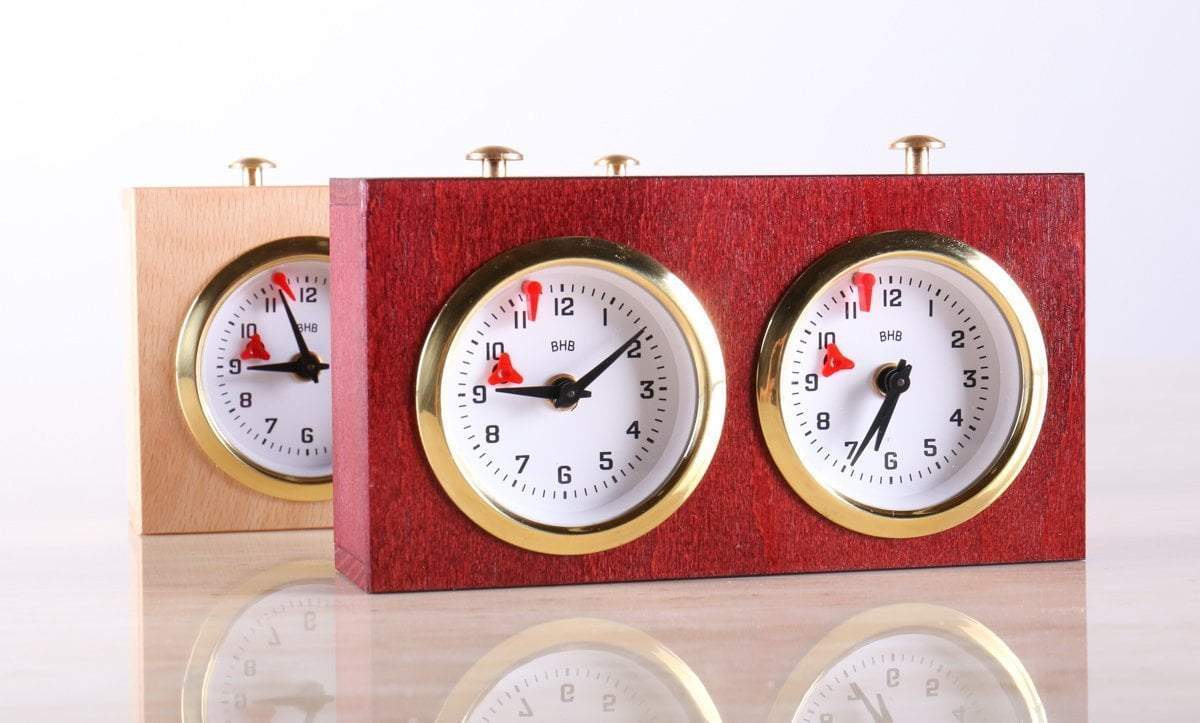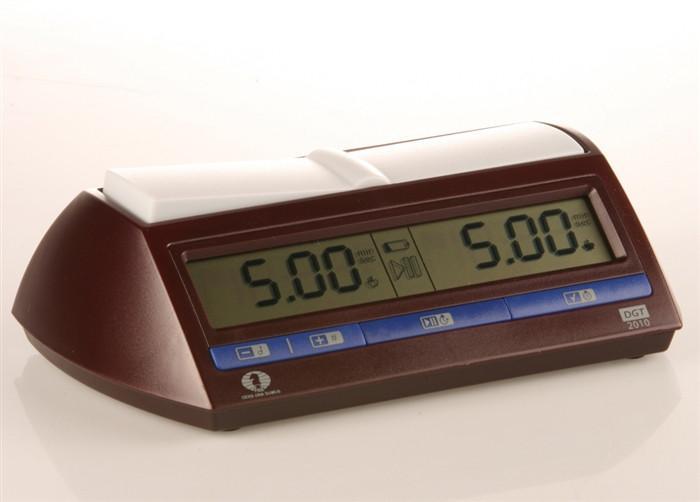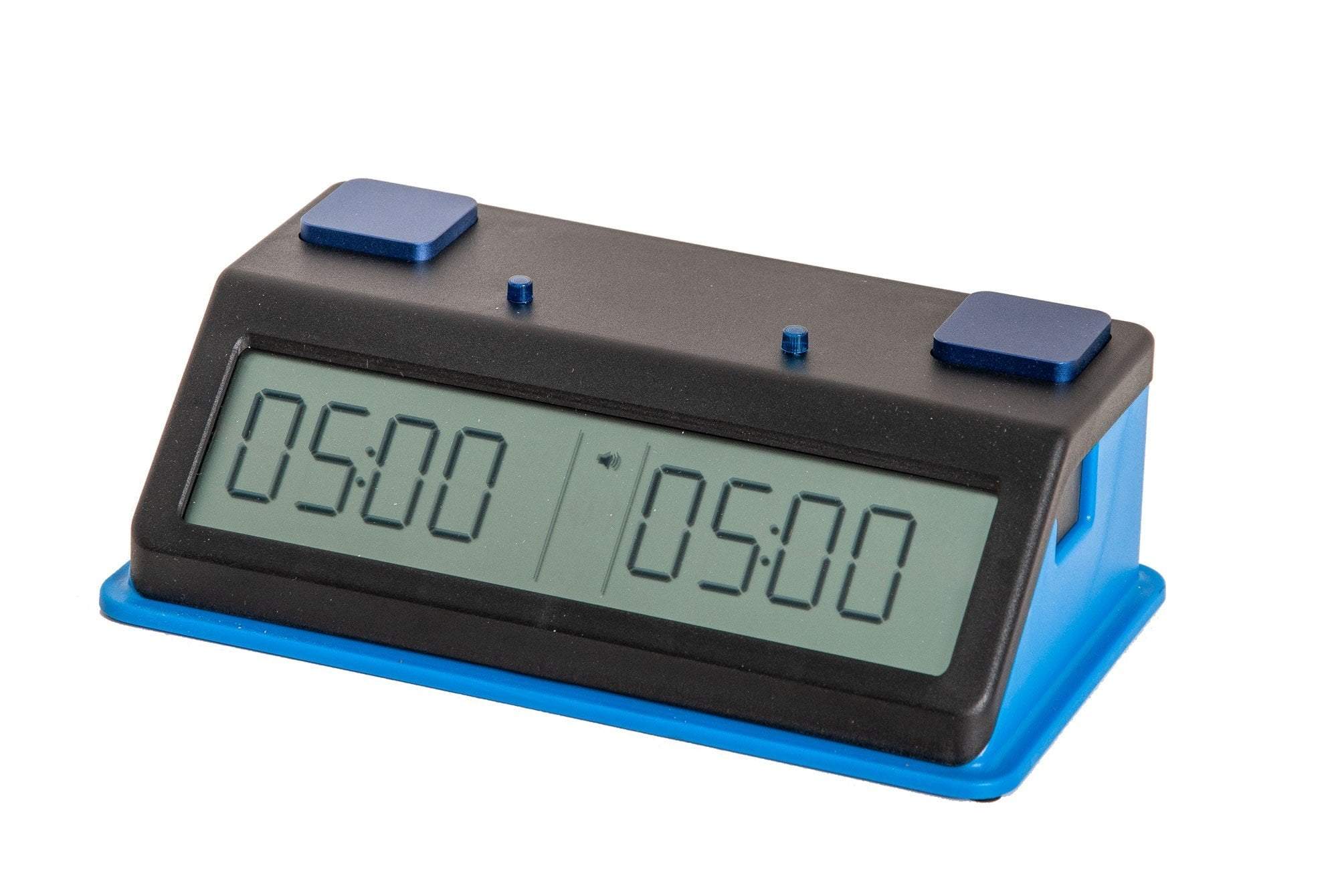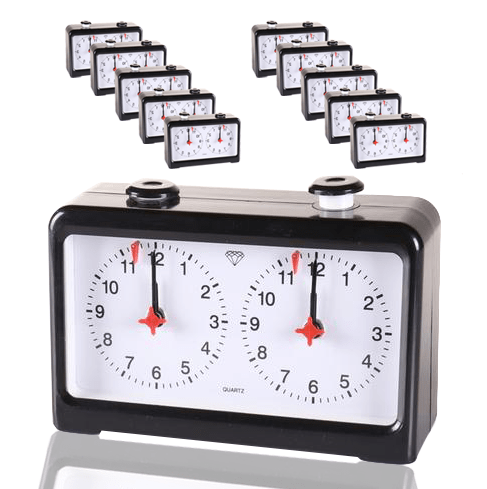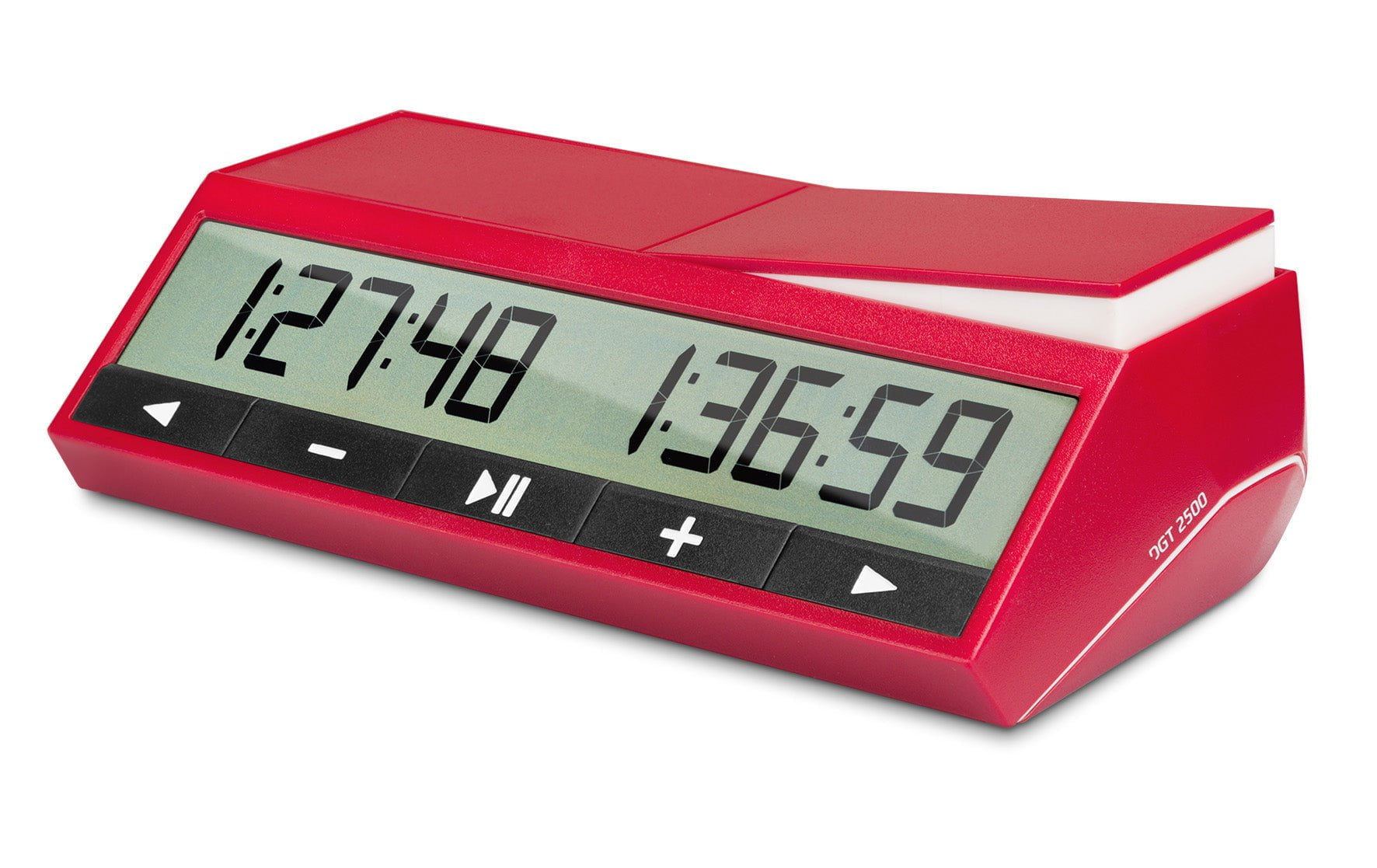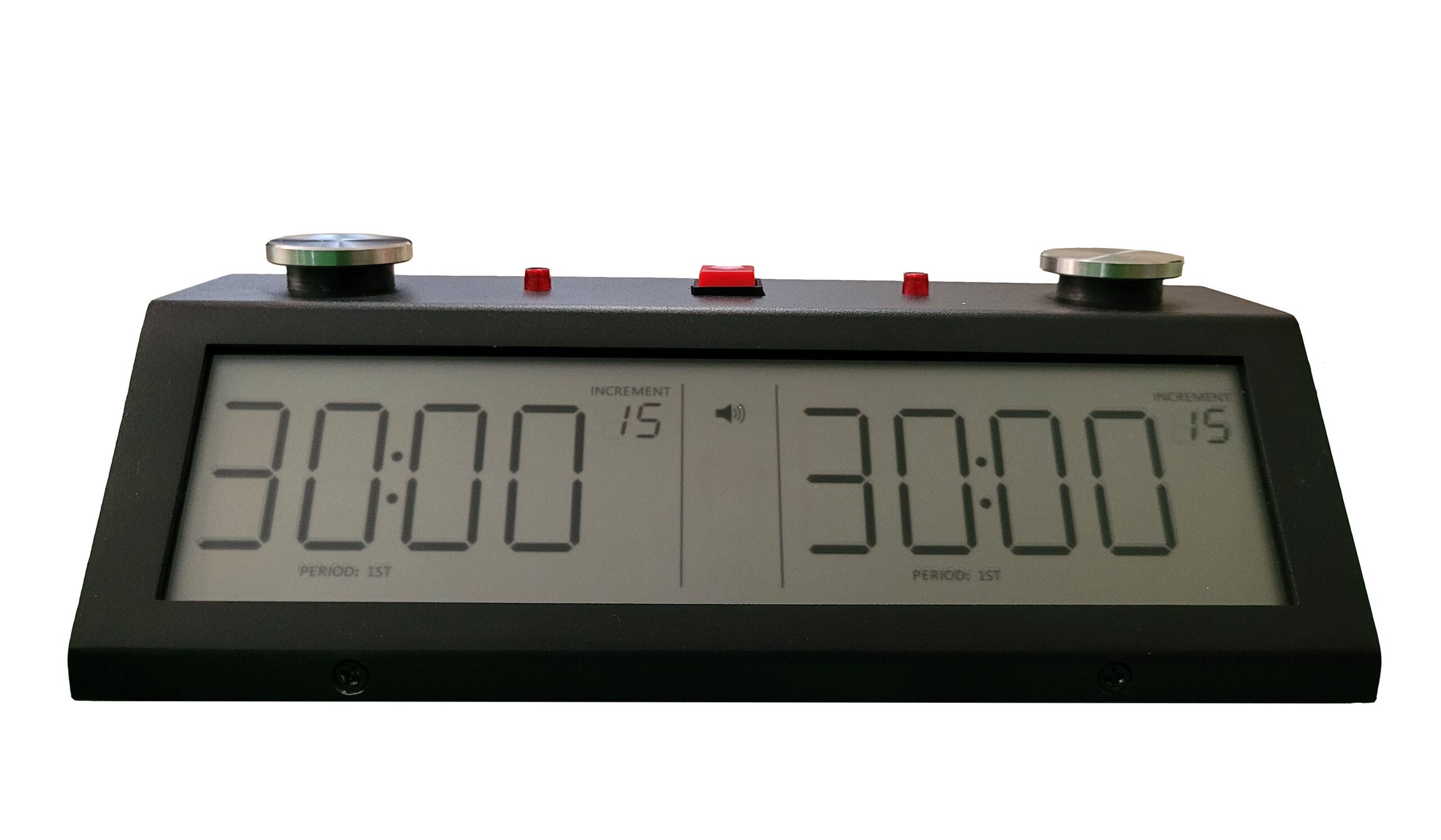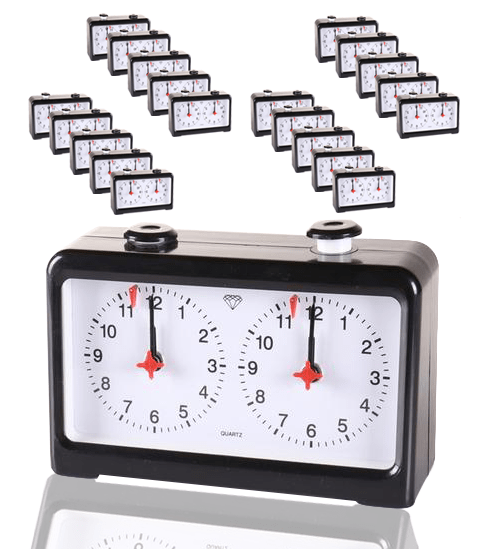Time management is an important chess playing skill and chess clocks ensure fairness for both players. Not only do they help games finish on time, chess clocks add strategy and excitement to the game.
Below the chess clocks available for purchase on this page is additional guidance on selecting a chess clock that's right for you.
Best Chess Clock
Ready to save time? Need a clock right now and don't want to spend any more time shopping?
The DGT North American is our highest rated digital chess timer and has the presets to make your life easy.
Just buy it and start playing. When you want more interesting modes, club and tournament styles - it's there for you.
Summary: Top Digital Chess Clocks
DGT North American ideal for most players, good presets display
DGT1002 bonus chess Timer (**) economical digital, easy to set, for personal or club
DGT1001 most economical digital clock (Event, Class, School)
ZMF PRO durable, metal case, large, visible display with maximum amount of features and customization; very intuitive and easy; made in USA; for enthusiasts
DGT 3000 deluxe model by DGT with large display, all basic and special timing features, connects to DGT e-board, emphasizes FIDE standards; for all players and events, international
ZMF II touch sensor style button, medium options, bright LED display, similar settings and savings on chronos; for players and clubs
At-a-glance: Analog Clocks
Club Chess Clock low budget wind-up style; personal and bulk for schools.
BHB Chess Clock European made, high quality chess timer that will last for a very long time. Personal use.
Quartz Chess Clock easy to use single AA battery operated clock with large analog display, a design that endures; schools, events, clubs.
GUIDE: How to Operate a Chess Clock
New to clocks? If you're wondering how a chess clock works, how to set it, and what time settings are standard, or even timing etiquette, this article on How to Operate a Chess Clock will be helpful.
Chess Clock Terminology
Time Delay
Most tournaments and organized events now require a chess timer capable of "delay" timing. A set amount of time, usually 5 seconds is added before a player's move. The benefit is that when a player is almost running out of time and in danger of losing based on time expiration, the 5 seconds always ensures at least a minimum amount of time available.
Bonus Time
Bonus time is similar to delay but it increase a player's time. With Bonus time a player can gain extra time by playing faster than the bonus time provided.


